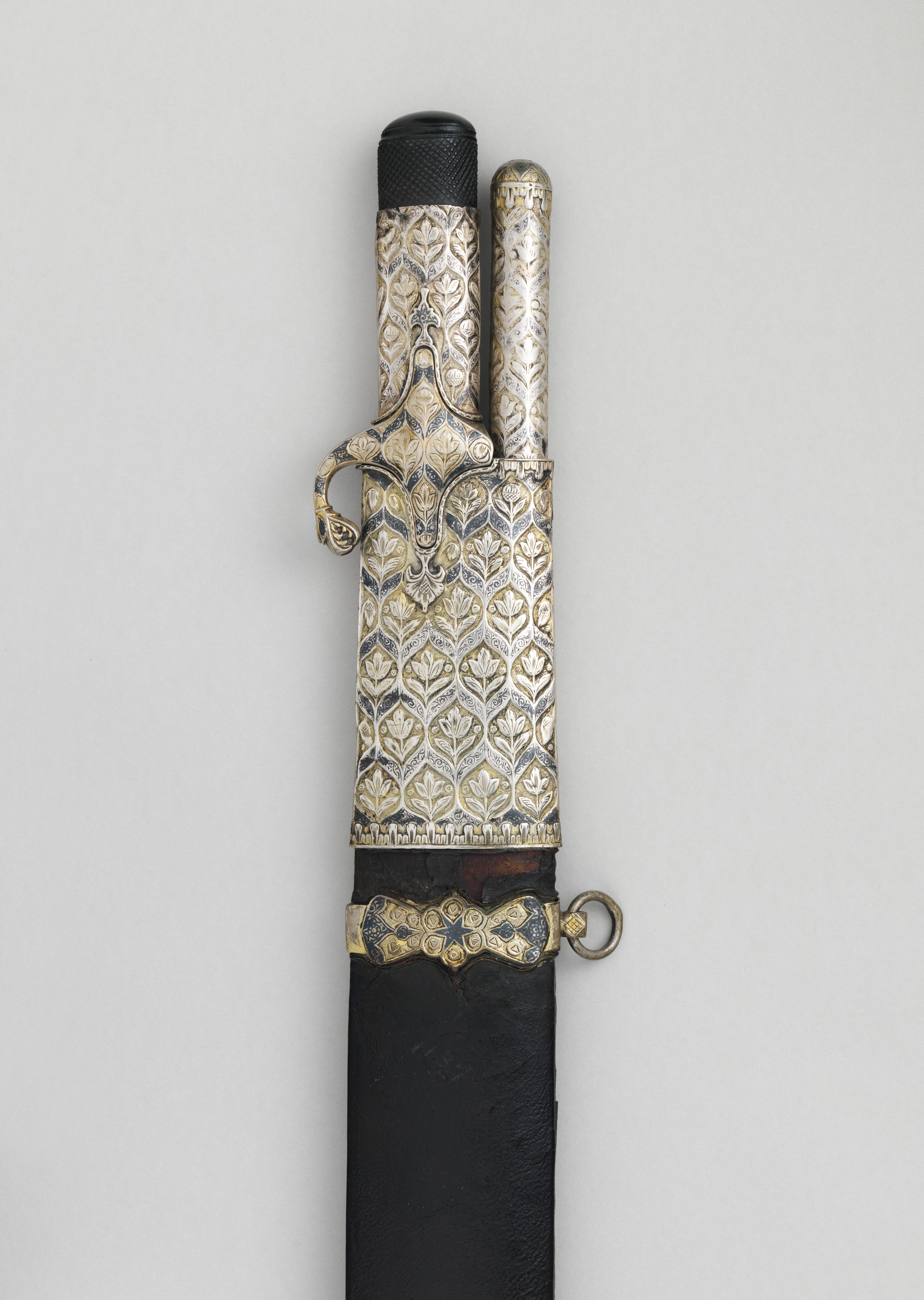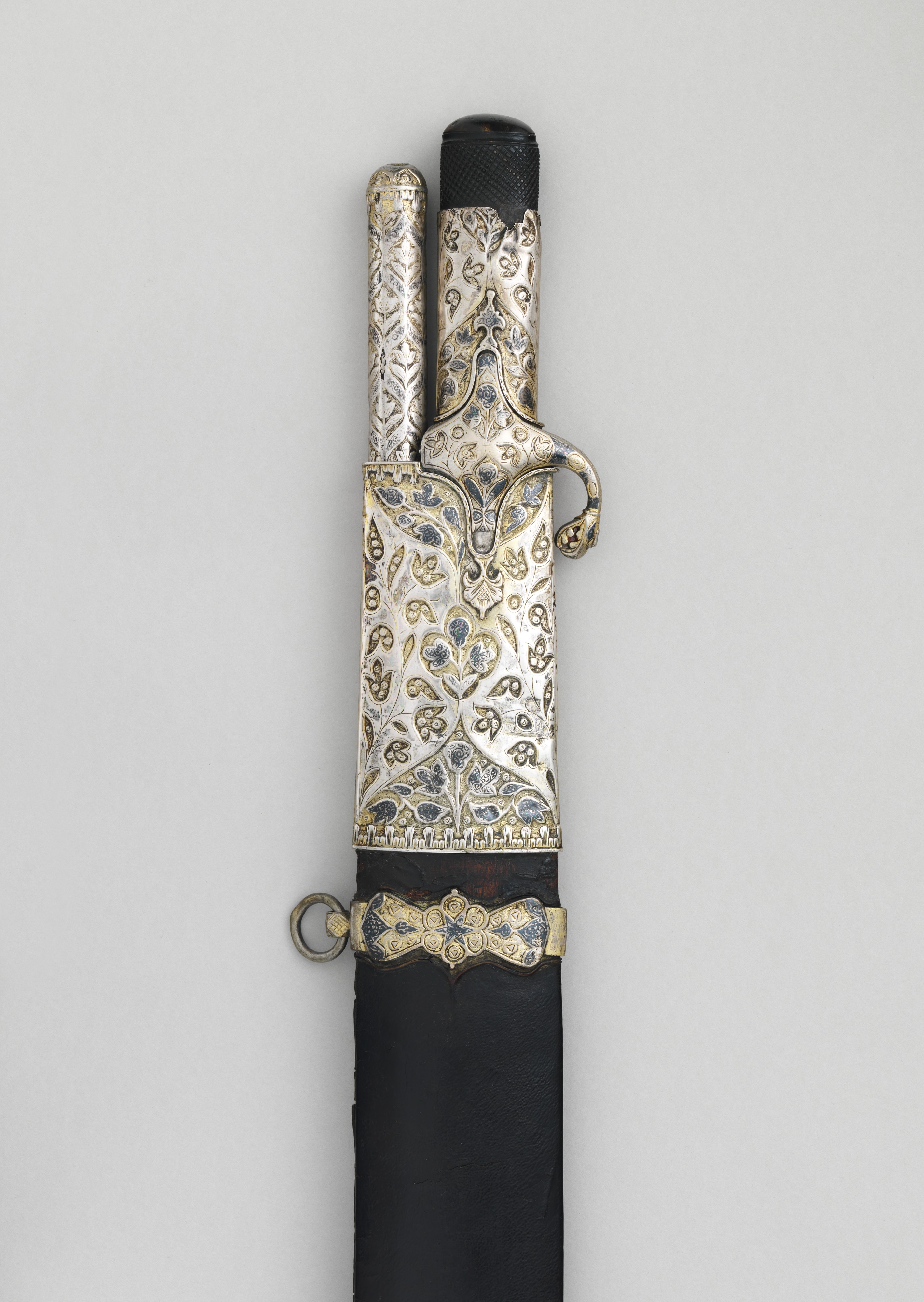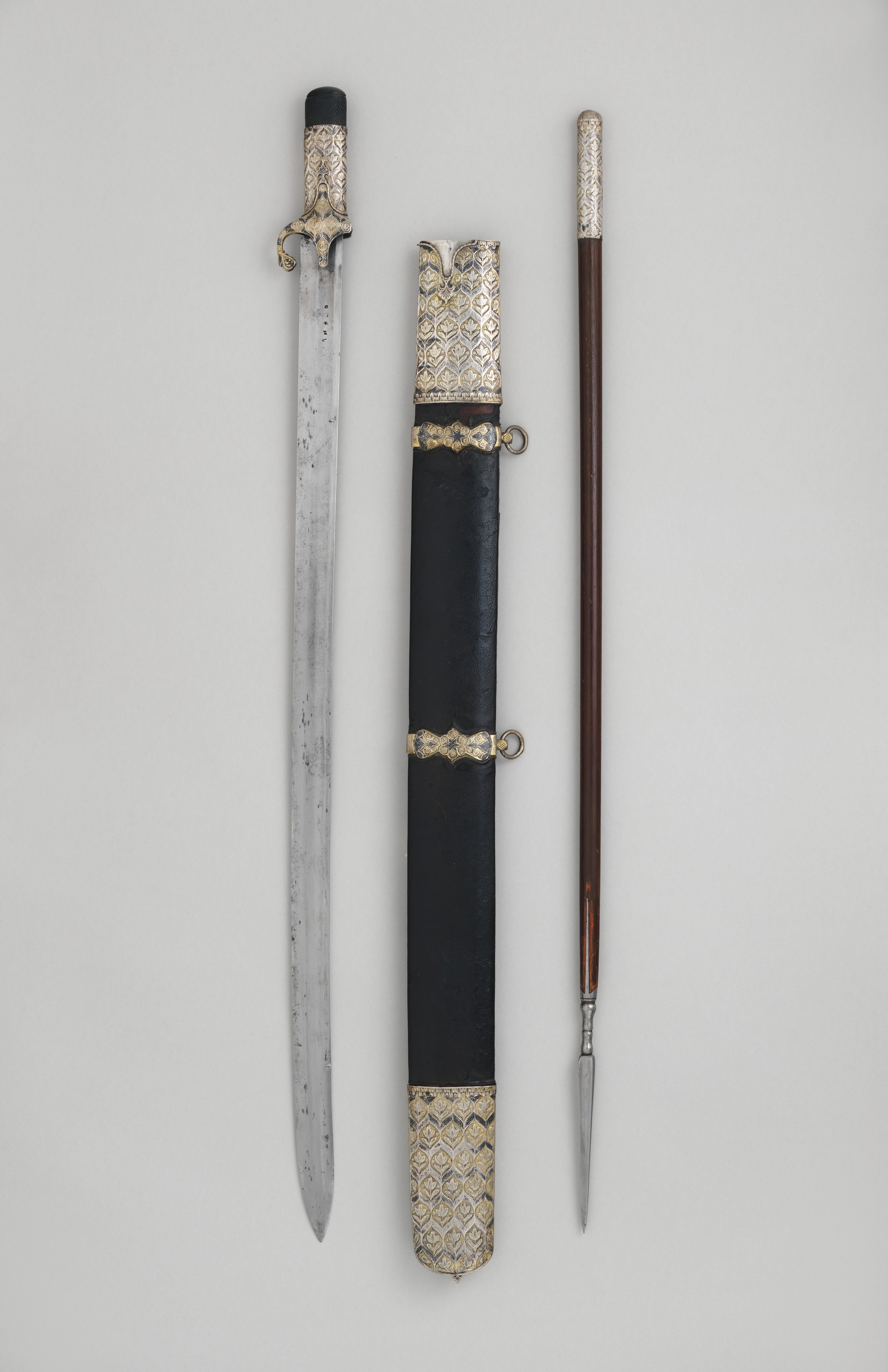Saber and Dart with Scabbard
Mounts and scabbard, Turkish; blade, European
The silver-gilt and niello decoration on this set of throwing dart and saber, as well as the dragon-head quillon, date the ensemble to Ottoman Turkey during the late seventeenth century. Dragon terminals were popluar with Ottoman metalworkers through much of the sixteenth to eighteenth century, but there is considerable variation in the form of the dragons. The stylized, roundish heads of this saber are of a late seventeenth-century type; a comparable example can be seen on a jug sent as a gift to the empress of Russia in 1692. A similar dating for the set is supported by the very similary silver-gilt decoration on a saber in the Wallace Collection, London, that bears an inscription stating that it was made in Constantinople in the year 1700 (no. 0A 1750). The comparison with the Wallace Collection saber is important, as the inscription on the latter demonstrates that this kind of work was produced in the capital, then usually called Constantinya. Yet it should not be thought that this type of nielloed floral decoration was confined to this precise period, as examples exist dating from the time of Mehmed IV (r. 1648–87) to that of Mustafa III (r. 1757–74). Both the dragon quillon and decoration on the Museum's set, however, are closer to work produced during the final years of the seventeenth century, and for that reason are dated here to approximately 1700.
Due to rights restrictions, this image cannot be enlarged, viewed at full screen, or downloaded.
This artwork is meant to be viewed from right to left. Scroll left to view more.





